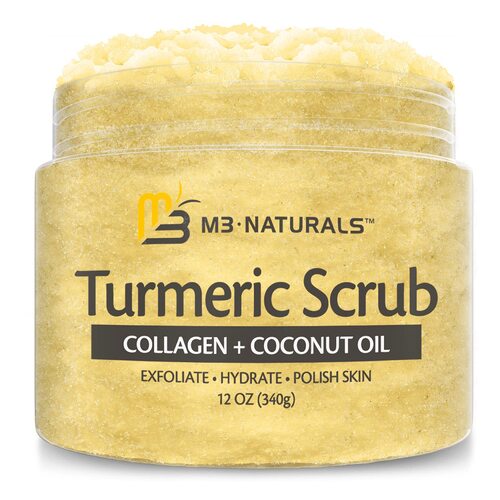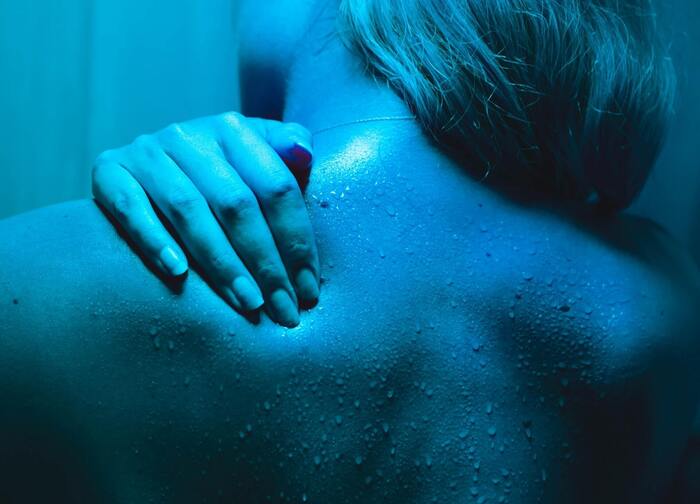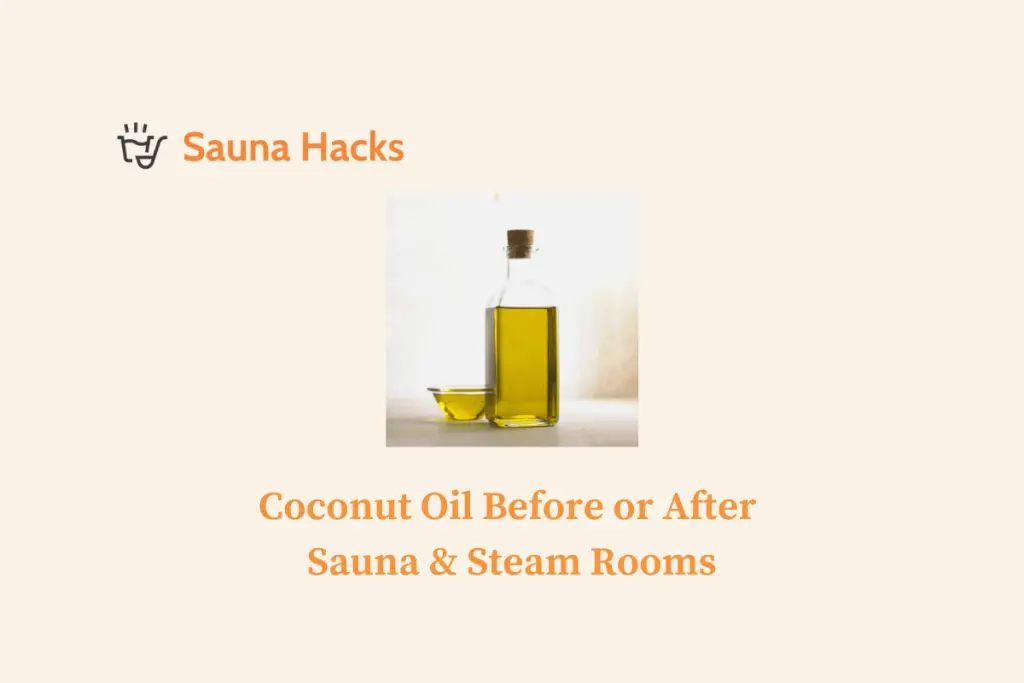[Sauna Hacks is reader-supported. When you buy through links on our site, we may earn an affiliate commission. Learn more.]
People from many cultures have used saunas for generations to eliminate impurities, purify their bodies, and achieve deep relaxation. If you’re not careful, skin injury or discomfort might spoil your tranquillity.
Hives after sauna or steam room sessions are appearing due to the salt on your skin. Typically they appear moments after you step out of a sauna or steam room or even hours later. To prevent hives from occurring make sure to take a shower and exfoliate well.
👇 You Need This 👇

– Gentle but effective exfoliating agents such as turmeric root extract, sea salt, and sugar
– Shea butter, jojoba oil, collagen, and retinol hydrate skin while improving skin texture
– Minimizes acne, cellulite, blackheads, wrinkles, fine lines, dark spots, shaving bumps, stretch marks, scars, spider veins, blemishes, etc
In the rest of the article, we are going to cover how the heat of a sauna or steam room affects your skin and the steps you can take to protect your skin.
Table of Contents
- What Does Heat From the Sauna & Steam Room Do to Your Skin
- Why Does Sauna & Steam Room Cause Heat Hives
- How to Protect Your Skin During Sauna & Steam Room Sessions
- Conclusion
What Does Heat From the Sauna & Steam Room Do to Your Skin

Water thrown upon hot rocks or a heater in a sauna produces very little humidity and emits dry heat.
Since saunas are commonly heated to temperatures between 170 to 212 degrees, this will considerably boost the skin’s interior temperature, dilating capillaries and improving blood circulation. Nearly all skin types will experience flushing and redness due to this.
Saunas also activate your body’s sweat glands. The sweat glands are stimulated by increased blood flow, which releases accumulated waste and accumulated poisons.
Daily perspiration can assist your body in detoxifying itself by removing a buildup of alcohol, nicotine, salt, sulfuric acid, cholesterol, and possibly cancer-causing heavy metals (lead, zinc, mercury, nickel, and cadmium).
The liquefaction of human body fat begins at about 110 degrees Fahrenheit. Through transpiration, fat leaves your body and carries heavy metals with it. This occurs because infrared energy profoundly penetrates your skin, which happens only in an infrared sauna, not in a regular sauna.
Why Does Sauna & Steam Room Cause Heat Hives
After using a sauna or steam room, you may experience itchy, red lumps on your skin. This is likely acute urticaria (hives). Your immune system is responding to the release of poisons into the blood, which is what is causing this histamine reaction. Your cells secrete fluid due to histamine, which results in itching.
As long as your breath does become challenging and it doesn’t persist for more than 30 to 60 minutes after your sauna session, this is not an issue.
How to Protect Your Skin During Sauna & Steam Room Sessions
Here are some of the ways you can ensure that you protect your skin while using a sauna or steam room. If you experience irritation regularly, you should talk to a dermatologist to get advice specifically for your skin.
- Before using a sauna, be sure to wash your face carefully
- Remove any makeup, grime, or product from your face since they can irritate your skin or lead to breakouts
- Dry brush your body to remove dead skin and other waste on your skin
- Rinse your skin before going into a sauna session
- Take a shower afterward
- Use lotion or oils
How to Dry Brush Your Body
Do not use this method if you have skin infections, rashes, damaged skin, diabetes, high blood pressure, or heart problems.
One of the best methods to prepare for the skin in a sauna is to dry brush the body before going into the damp heat. The sauna may penetrate the skin more efficiently by exfoliating dead skin cells from a dry body using a loofah, organic bristle brush, or rough washcloth.
In Eastern Europe and Scandinavia, the skin is softly rubbed with bundles of green branches before entering the sauna to promote blood circulation and eliminate waste.
Using an organic bristle brush, loofah, or coarse cloth on the skin before entering the sauna is one of the best ways to aid in the removal of toxins through the skin’s pores. Before drying your skin, wash off any moisturizer or oil that may be on it in the shower.
From your feet to the top of your body, always stroke your skin in the direction of your heart. As you become more acclimated to dry brushing, your strokes may become harder. Strokes should be fast but only as harsh as you can tolerate. Each body part should only require seven strokes in total.
Work your way up, beginning at the soles of the feet, legs, and thighs, always stroking the front and back. You’ll start to glow pink all around.
Increased muscular tone, fatty deposit prevention, pore and oil gland opening, hormonal and organ activation, neurological system renewal, improved complexion, and postponement of premature aging are all benefits of dry brushing.
Even when not using a sauna, dry brushing before every shower is a fantastic technique to keep your body healthy.
Wash Your Skin Before Going in a Sauna
Before going into a sauna, always rinse your skin. You may unclog the skin in this way by washing away the last of the dry skin cells that are on the surface. Cleanse your skin with natural products that include herbal extracts before steaming.
Using natural soaps, you may be able to keep unnecessary materials from blocking your pores.

Take a Shower After The Sauna
Rinse your skin with cold water after using the sauna to improve circulation and flush out toxins that may generate, such as uric acid crystals. A typical rule for bathing is to prevent skin drying by using soap in your groin and under your arms unless your body is unclean.
Use Lotion or Oils
Once you’ve finished your final sauna session and dried off after your shower, apply an essential oil or lotion to keep your skin supple.
Using coconut oil to moisturize your hair and body can help your body regain some of the health and moisture lost due to physical or seasonal changes. Most individuals use coconut oil in their spa regimens or trips to the sauna since saunas cause your body to dry.
You can also use essential oils in the sauna to improve specific ailments or help you relax into the experience more.
Conclusion
For decades, people from many cultures have used saunas to get rid of toxins, cleanse their bodies, and unwind. If you’re not careful, skin pain or damage might ruin your peace of mind.
The salt may still be on your skin if you have hives after using the sauna. Even several hours after using a sauna, if you experience a bad skin reaction, cleaning your face or taking a shower will help relieve the discomfort.
(Featured image from Canva Photos)


